
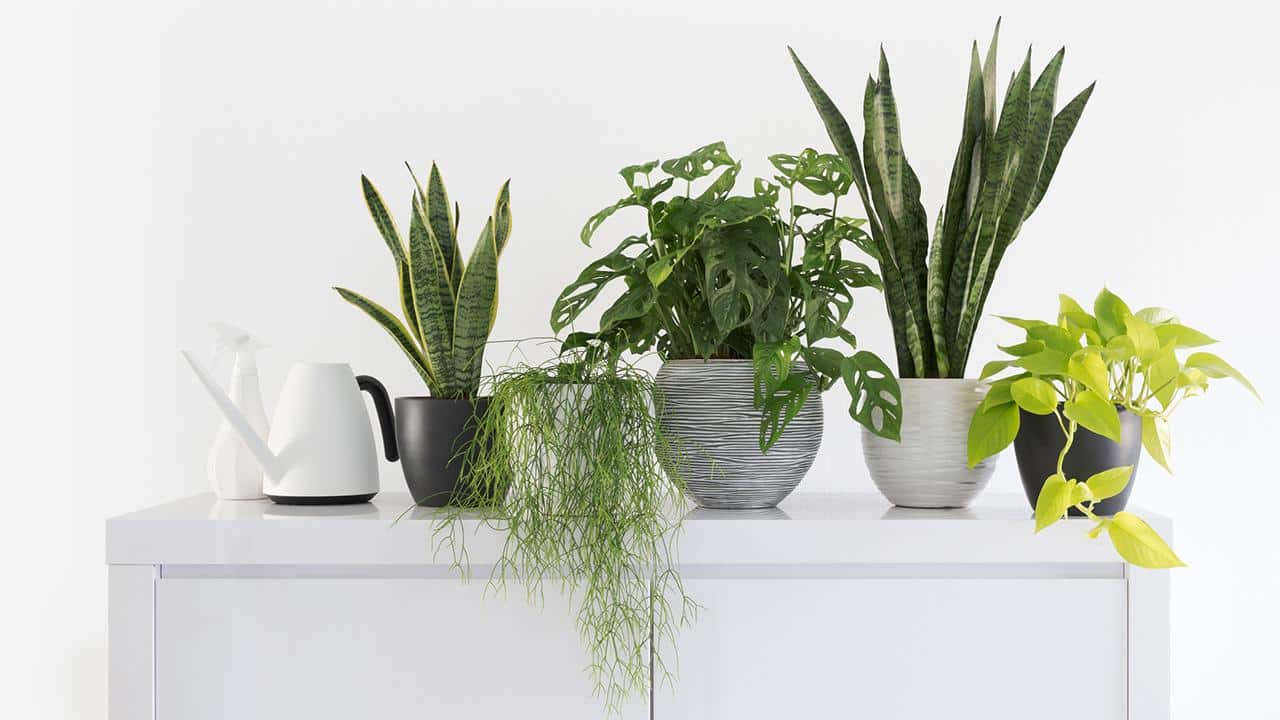
dropStock / iStock / Getty Images
Nurturing plant life can be a highly fulfilling activity, no matter where you choose to garden. Through indoor gardening, you can maintain more delicate or climate-sensitive plants, including succulents and indoor herb gardens, while also filling your home with vivacious greenery.
Whether you’re just getting started with indoor gardening or you’re an old pro, it’s helpful to know some of the best indoor houseplants. In this article, you’ll find a guide to some of the top flora for indoor gardening enthusiasts.
How to Choose the Best Houseplants
When it comes to selecting the right houseplants, there are a number of factors you’ll want to keep in mind. Here are some of the considerations we made in creating our list.
- Light conditions. It’s important to know whether a plant needs bright light, medium light, indirect light, or low light to flourish. Can your plant thrive with indirect sunlight or does it need a lot of direct sunlight? Will you need to invest in a particular kind of indoor grow light? And what grow lights are best?
- The size of the plant. Indoor plants range from tiny little things that you can keep on your desk, to more substantial plants that need to be potted on the floor. Naturally, in selecting indoor houseplants, you’ll want to think about the space available to you.
- Level of care. Some plants need a lot of TLC. Others can essentially be left on their own most of the time. Think about the level of involvement you wish to have in your indoor plant’s life and development.
- Pet-friendliness. Sometimes, houseplants and pets don’t mix. Be sure you don’t invest in flora that could tempt your dog or cat into nibbling, or that could actually be toxic if ingested.
- Functionality. Some people want indoor houseplants just to look pretty. That’s totally fine! Others actually want their houseplants to help clean the air inside their home. If that’s what you’re looking for, you’ll want to be diligent in selecting the right species.
- The style of plant. Do you prefer a potted plant? A hanging basket? A blooming, vertical, or cascade style? Take some time to think about your aesthetic preferences before you invest in houseplants of any kind.
With these criteria in mind, we’re now ready to take a closer look at the best houseplants to buy for your indoor garden.
The Best Indoor Plants (You Can Keep Alive)
Here are our picks for the 12 best indoor plants.
Each product featured here has been independently selected by the writer. If you make a purchase using the links included, we may earn commission.
Pothos
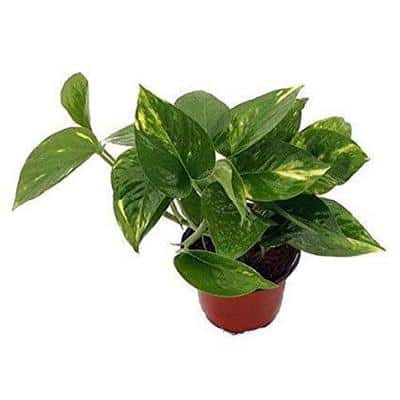
9greenbox.com
The pothos is sometimes known as the “cubicle plant,” a reference to its relatively small size. That nickname may be a little misleading, however; the pothos can actually develop long, trailing vines that stretch out for 10 feet or more!
There are plenty of reasons why the pothos ranks so highly on our list. One is that the pothos is one of the best plants for purifying the air in your home. The pothos is also an ideal choice for so-called “black thumbs,” surviving with minimal care. If you’re after an indoor plant that’s relatively forgiving, pothos is a good one to keep in mind.
Succulents
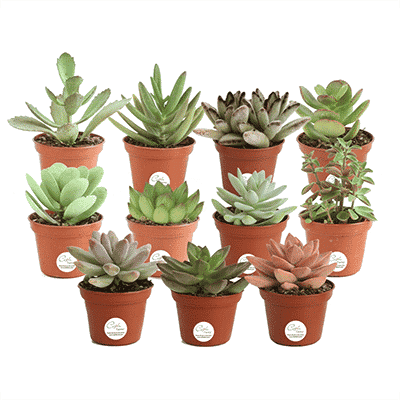
costafarms.com
Succulents actually refer to a family of plants, which tend to be very hardy and thrive in warmer temperatures. They’re popular among indoor gardeners for a number of reasons, not least their vibrant, fleshy leaves and beautiful color.
Also note that succulents propagate easily; with some varieties, you can literally grow a whole new plant just by tending to one of the leaves from an existing succulent. With so many varieties of succulents to choose from, this is almost a world unto itself, and a great path for any indoor gardener to follow.
Aloe Vera

costafarms.com
If you’re looking for plants that are highly functional, one of the best choices is the aloe vera plant. As you’re probably aware, this plant has amazing anti-inflammatory and anti-bacterial products. Its healing properties make it useful anytime you have a little scrape or burn.
There are plenty of other reasons to consider adding aloe to your indoor garden, including the fact that it’s one of the best bets for purifying the air in your home. And while aloe is fairly easy to care for, it is not a pet-friendly plant, and should definitely be kept out of reach from your four-legged family members.
Peace Lily
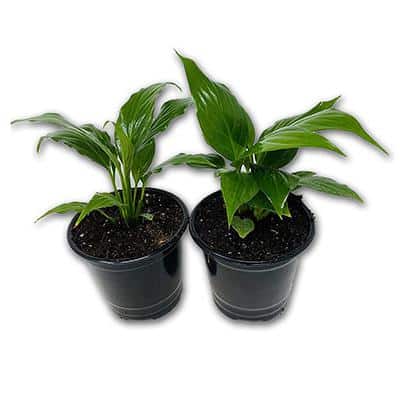
JM BAMBOO
The Peace Lily is an outstanding pick for indoor gardeners who already have some experience keeping their flora alive. That’s because it does require a higher level of care. You’ll need to provide moist soil without overwatering, and you’ll need to ensure it has a good mix of shade and indirect sunlight. If you’re up for that challenge, though, a Peace Lily can be a great way to develop your green thumb.
Also note that the Peace Lily is not pet-friendly, but does help purify the air in your home.
Philodendron
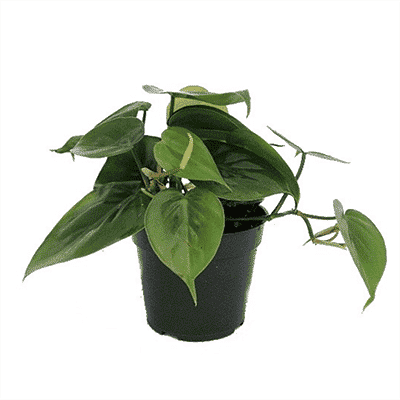
hirts.com
Like the pothos, the philodendron is a houseplant that may surprise you: Though it seems compact, it can grow long, trailing vines that span 10 feet or more. Because of this, it’s really great for anyone who wants a hanging plant, or something they can put on a high shelf.
There are other benefits to this plant as well. It’s easy to nurture, easy to prune, and it’s easy to propagate, if growing more philodendron is something you’re interested in. Altogether, this is one of the best indoor plants for those who are new to gardening, or who don’t fancy themselves as being especially plant-savvy.
Snake Plant
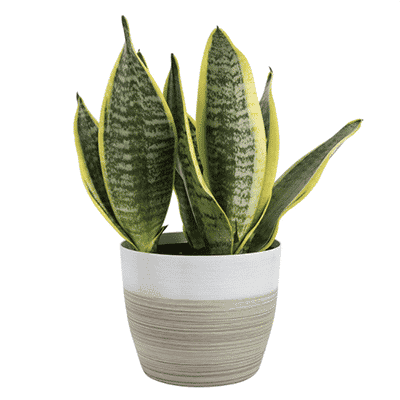
costafarms.com
No, this plant is not going to attract snakes to your home, so don’t worry. It gets its name due to the green leaves with irregular banding, which can sometimes resemble the patterns you see on snakeskins.
Beyond the unique aesthetics, the snake plant is fantastic because it’s extremely low-maintenance. Actually, snake plants are well-known for surviving periods of extended drought! Plus, they can filter a lot of chemicals out of the air, significantly improving the indoor air quality in your home. This is definitely an indoor plant that should be on any short list.
Monstera
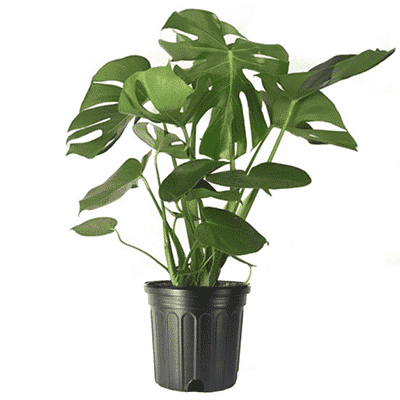
americanplantexchange.com
Here’s another lovely indoor plant that happens to have a scary-sounding name. Rest assured that there is nothing “monstrous” about this particular houseplant, beyond the astonishing rate with which it grows and propagates. While we wouldn’t say it’s zero-maintenance, it’s still a fairly easygoing plant.
Even if you have a mixed track record of keeping your plants alive, this one will probably be just fine. Actually, you only need to water your monstera every week or two, and make certain it gets indirect sunlight to see it thrive.
Money Tree
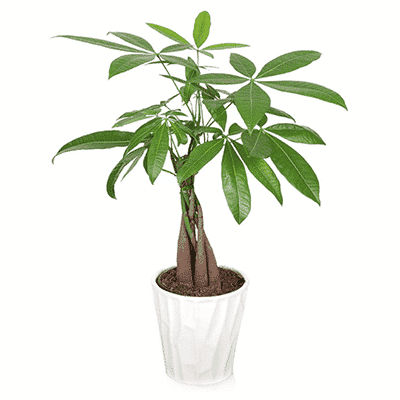
justaddiceorchids.com
The money tree has long been a symbol of wealth and good fortune, hence its name. Even if you don’t place any stock in that, money trees can be excellent additions to any indoor garden. They are relatively easy to maintain, they live for a long time, and they look amazing once they really start to grow.
If you choose a money tree, just be sure to provide some direct sunlight, keep the temperature reasonably warm, and water your plant once a week or so. That’s about all it takes for your money tree to grow.
Anthurium
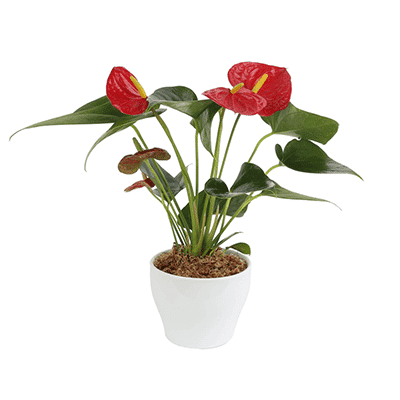
costafarms.com
The anthurium is actually an entire genus of plants, with more than 1,000 species in total. No matter which one you get, though, you should find that it’s incredibly resilient and easy to keep alive. Its bright colors can add a big splash of character to your home garden or living room.
This is another one of the best houseplants for those who are brand new to indoor gardening, or who worry that they don’t have the highest-level skills when it comes to nurturing plants.
ZZ Plant
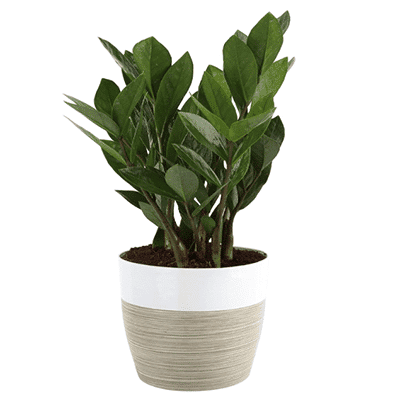
costafarms.com
The ZZ plant, or zamioculcas zamiifolia, sports large, almost potato-like rhizomes; that is, it features thick, tall stalks that grow vertically. It also happens to be a really hardy plant that’s ideally suited for low-light environments. Note that the rhizomes are so thick because they are used to store water, which allows this plant to survive for a really long time even with inconsistent upkeep.
The ZZ plant is no good if you have pets. However, because it has long symbolized friendship, it can make for a sweet and thoughtful housewarming gift.
Bird’s Nest Fern
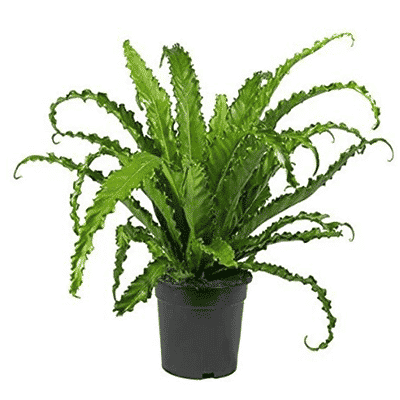
wekiwagardens.com
Looking for a plant that offers not just a cool name, but also an utterly unique appearance? Look no further than the bird’s nest fern, with its oddly-rippled fronds. It’s sure to be an instant conversation-starter if you bring it into your home garden.
Note that the bird’s nest fern fares best in indirect sunlight, as well as in areas that get a lot of humidity. Because of this, many indoor gardeners choose this one to add greenery to their bathroom.
Fiddle-leaf fig
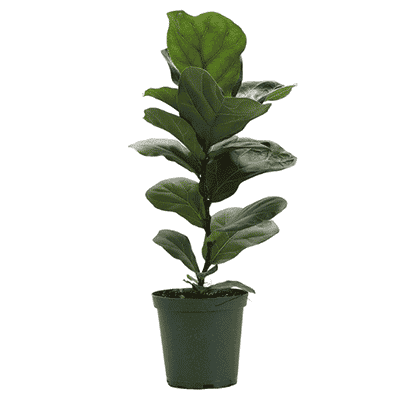
thorsensgreenhouse.com
Last but not least, the fiddle-leaf fig (ficus lyrata) is a perfect plant for any indoor gardener who can offer access to some decent sunlight. Looking for a plant to set in the windowsill? This is one of your best bets! It boasts a lovely appearance, though it does require a more experienced gardener.
Unfortunately, the fiddle-leaf fig is more susceptible to pests and plant diseases than some other plants, and it can also be sensitive to swings in temperature or humidity. That said, it is a gorgeous plant that will definitely reward you for your attentive care.
What You’ll Need to Grow Houseplants
Choosing the right kinds of plants is a critical first step toward developing a vibrant indoor garden. But of course, there’s some additional equipment you’ll want to invest in to make sure you’re able to tend to your plants as needed.
A few of the basic tools to have handy include:
- Watering can
- Hand trowel
- Pruning scissors
- Potting soil*
- Fertilizer*
* Note that different plants may require different kinds of soil or fertilizer, so make sure you select the materials best suited to your specific indoor plant life.
What are the Benefits of Indoor Plants?
No matter which specific houseplants you invest in, your home will benefit from them. Indeed, the benefits of keeping indoor plants are numerous.
- They can clean contaminants out of your air.
- They can help you achieve a cozy, welcoming vibe in any room.
- Indoor plant life has also been linked with improved mental health.
- Caring for plant life can provide a sense of accomplishment.
- Some plants, such as aloe vera, also come with unique healing effects.
These are just a few of the reasons to continue opening your home to some low-maintenance flora.
What are the Easiest Plants to Grow Indoors?
While some indoor gardeners want a challenge, many of us are simply interested in something we can enjoy with relatively low maintenance; or, at least, something that will prove fairly resilient, should we accidentally forget to water it as promptly as we should.
Some of the easiest indoor plant options include:
If you’re looking for something that’s truly beginner-friendly, put these plants at the top of your shopping list.
Where Can You Find the Best Houseplants?
As for indoor plant shopping, there are certainly plenty of options. You can actually have indoor plants shipped to you directly from Amazon, or from more garden-specific e-retailers such as Cellar Door Plants, The Sill, and Bloomscape.
Alternatively, we recommend spending some time at a local lawn and garden center. There, you can actually see some plants up close and get a good idea of the space they will take up. Plus, you can ask the local pros for any tips, stock up on tools, etc.
Big-box home improvement stores can also be good places to try as you seek indoor plants and equipment.
Turn Your Home Into an Indoor Garden
One of the great things about indoor gardening is that there’s a relatively low threshold for entry. Even if you’ve never considered it before, you can stock up on a few low-maintenance plants and be well on your way. Why not start with just a single succulent or a couple of pothos plants, and see where things go from there?
Whatever direction you decide to go in, we wish you the best as you reap all the benefits of indoor gardening. Start with any of the plants on this list and you’ll be in good shape!
Josh Hurst is a journalist, critic, and essayist. He lives in Knoxville, TN, with his wife and three sons. He covers natural health, nutrition, supplements, and clean energy. His writing has appeared in Health, Shape, and Remedy Review.
- How House Plants Keep You Healthy - EcoWatch
- 20 Houseplants That Remove Airborne Toxins From Your Home ...
- 7 Science-Backed Health Benefits of Having Plants at Home ...
- Find the Best Grow Lights for Indoor Plants - EcoWatch
- Scientists Combine House Plant With Rabbit Gene to Form 'Green ...
- The Environmental Benefits of Proper Tree Maintenance - EcoWatch

 233k
233k  41k
41k  Subscribe
Subscribe 